Last week, i mentioned my quick trip to Leiden to see the winning projects of the third edition of the Designers & Artists 4 Genomics Award, an international competition that gives artists and designers the opportunity to collaborate with life science institutions carrying out research into the genetic makeup of people, animals, plants and microorganisms.
One of the winning works is The Living Mirror, a ‘bio-installation’ that combines magnetic bacteria with electronics and photo manipulation to create liquid, 3D portraits. The piece was developed by Laura Cinti & Howard Boland from the art-science collective C-Lab in partnership with AMOLF, a research institute focusing on nanophotonics and physics of biomolecular systems
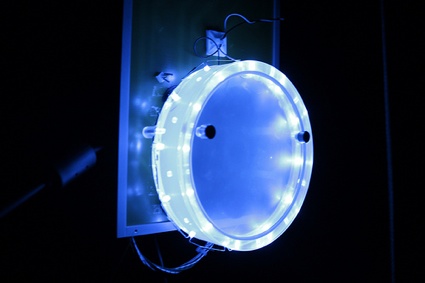
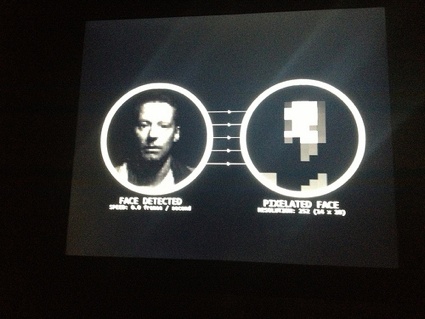 Image C-Lab
Image C-Lab
![]() Image C-Lab
Image C-Lab
Living Mirror involves cultivating magnetotactic bacteria, a group of bacteria able to orient along the magnetic field lines of Earth’s magnetic field. The artists collected the bacteria and used an array of tiny electromagnetic coils to shift the magnetic field, causing the bacteria rapidly reorient their body that changes how light is scattered. The resultant effect can be seen as a light pulse or a shimmer. Taking pixel values from darker and lighter areas in captured images, [C-Lab] programmatically harmonise hundreds of light pulses to re-represent the image inside a liquid culture.
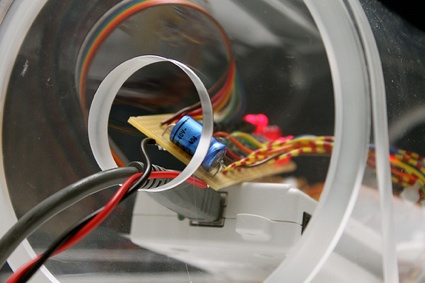 Image C-Lab
Image C-Lab
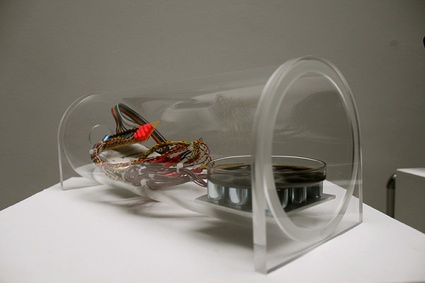 Image C-Lab
Image C-Lab
I had a quick Q&A with the artists:
Hi Laura and Howard! The Living Mirror, to me at least, almost belongs to the world of magic.It uses software, hardware and wetware. It is a particularly complex project. How did you know it would work out in the end? And what were the biggest challenges you encountered during its development?
Indeed, as a work it has been a very ambitious undertaking that integrates quite complex processes of wetware, software and hardware. We had to work very closely with various types of engineering disciplines and work as engineers ourselves. Over the past few months we built several prototypes to help us understand how a magnetic culture of bacteria might work. In the beginning when we worked on pulling biomass our biggest challenge was to generate enough bacteria and have a system that could produce a significant magnetic pulling force.
The interactive art installation was aimed at producing real-time images using living bacteria – but pulling biomass was slow. When we discovered that these bacteria produced a shimmering effect in real-time we were intrigued and felt that this was a better phenomenon to pursue and also allowed us to work with much lower magnetic forces. By changing the magnetic field we were seeing bacteria rapidly switching direction in a synchronic rotation causing light to scatter and producing a visible shimmer. So the major challenges we have encountered so far has been cultivating these bacteria and producing the electronic boards needed for approximately 250 individual magnetic coils.
There are many unknowns in the project which is what makes it quite exciting for us – having living bacteria respond in real-time is not something we experience on a visual scale we are accustomed to and finding out whether this system will be able to produce shimmering pixels that can form a portrait image is to be seen in the weeks to come.
To see the shimmering effect we observe, please see these videos below:
Bacteria scattering light at different magnetic speed
M. gryphiswaldense on magnetic stirrer
In LIVING MIRROR, multiple pulsating waves of bacteria are made to form a pixelated image using electromagnetic coils that shift magnetic fields across surface areas. By taking pixel values from darker and lighter areas in captured images, LIVING MIRROR programmatically attempts to harmonise hundreds of light pulses to re-represent the image inside a liquid culture.
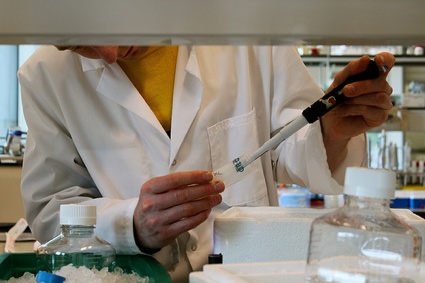 Image C-Lab
Image C-Lab
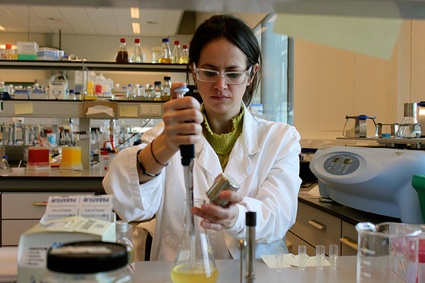 Image C-Lab
Image C-Lab
In the proposal you wrote for the competition, you say that “Recent years have seen the human body reconfigured as an ecosystem of mostly non-human bacterial cells. Together with fungi and human cells, these form our complex ‘superorganism’, an image the work seeks to renegotiate by literally reflecting and fleshing out these ideas.” Could you elaborate what you mean by that?
Until recently, our understanding of human ‘self’ was, at least biologically speaking, thought to be ‘human’ cells. This perspective is now understood to include microbial communities and interestingly, these microbial cells not only outnumber our own ‘human’ cells but our bodies contain significantly more of microbial DNA than our own genome. (Our bodies contain a mere 10 per cent of human cells and 90 per cent microbial cells). In this sense our bodies can be seen as a ‘superorganisms’ – working collectively as a unified organism or an ecosystem.
As a liquid biological mirror, LIVING MIRROR draws on the idea of water as our first interface predating today’s screen-based digital technologies. It points to the myth of Narcissus who fell in love with his own image by believing it was someone else in the water reflection. Drawn into the image, he tragically drowned – a reminder of how we continue to immerse ourselves in similar mirrors as we extend our identity into the virtual. Simultaneously, the work highlights how contemporary science has shattered the idea of our own body by recognising that we are mostly made up of non-human bacterial cells. These ideas have shaped digital and biological understandings of our human self and are technically and conceptually reflected in LIVING MIRROR.
A living mirror is a very seducing idea. Do you see possible applications for it? Or was it just an artistic experiment?
Throughout the project we have been in communication with many leading researchers and there are certainly some specific technological overlaps (i.e. possible use of shimmer as a magnetic measurement or methods for orienting or guiding cells). As a display what can be seen is certainly different to existing technologies and LIVING MIRROR remains a research-based artwork.
Thanks Laura and Howard!
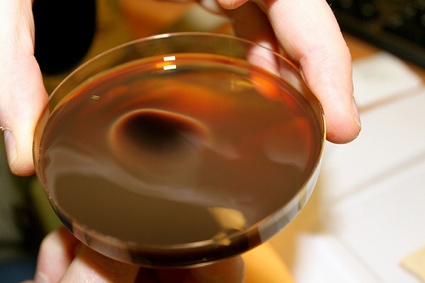 Image C-Lab
Image C-Lab
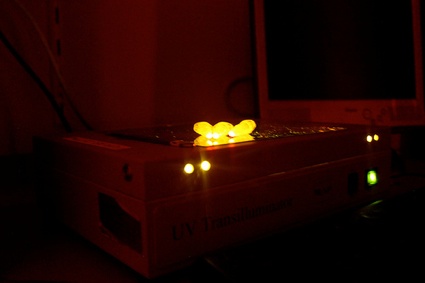 Image C-Lab
Image C-Lab
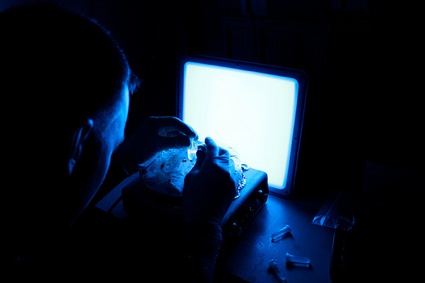 Image C-Lab
Image C-Lab
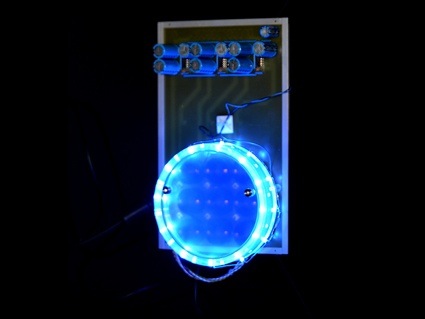 Image C-Lab
Image C-Lab
Video of Prototype #2 with Magnetotactic Bacteria in Continuous Vessel (9 coils)
The Living Mirror and the other winning projects of DA4GA are on view until 15 December at Raamsteeg2 in Leiden, in The Netherlands.
Previously: Ergo Sum – The creation of a second self using stem cell technology and The Fish Bone Chapel.
